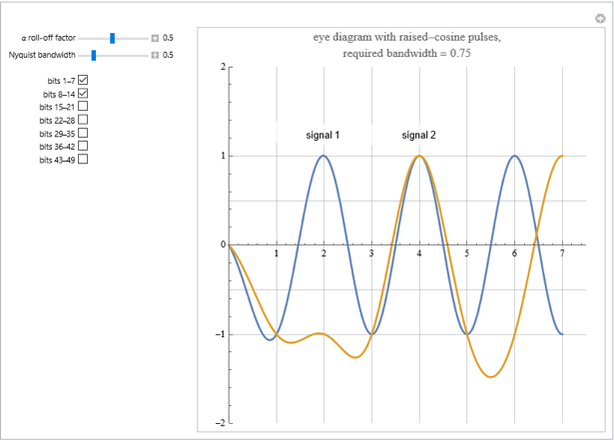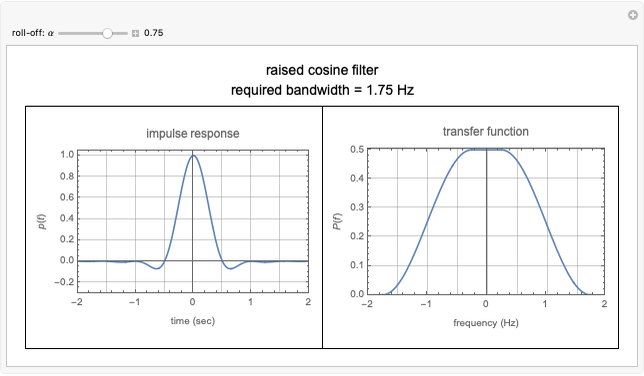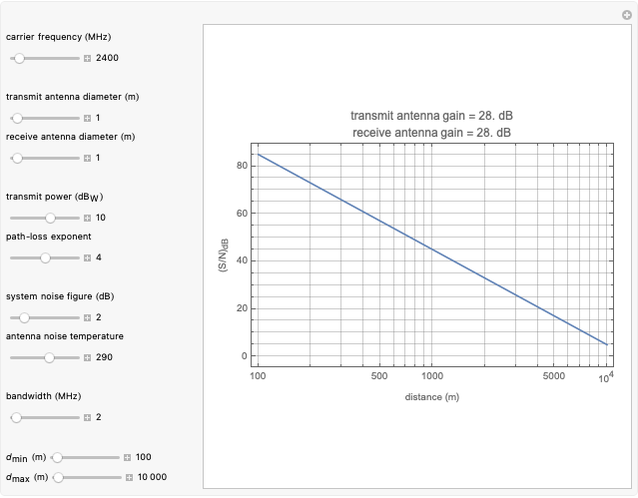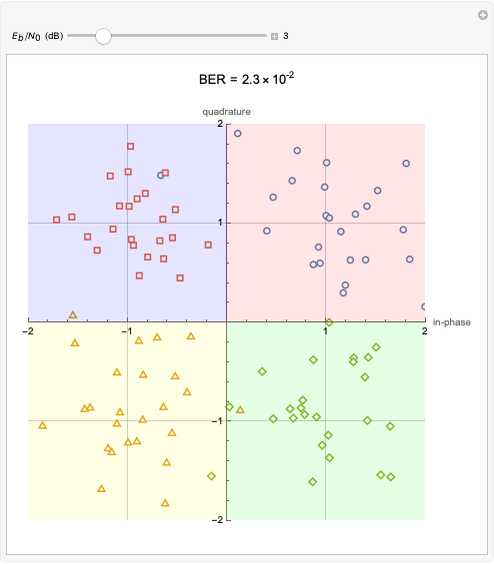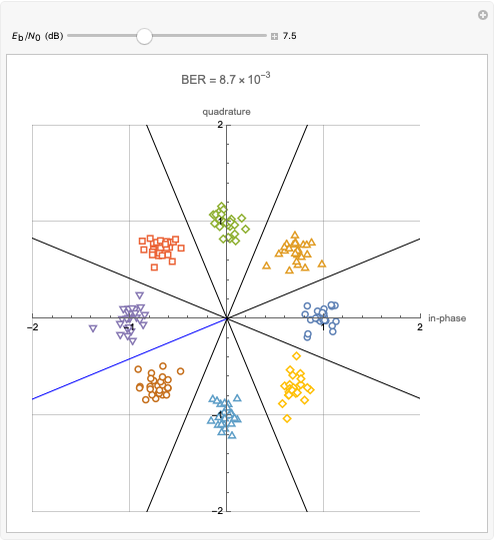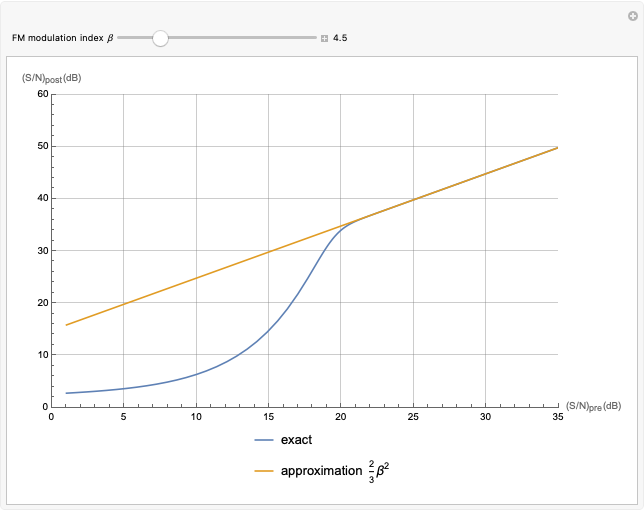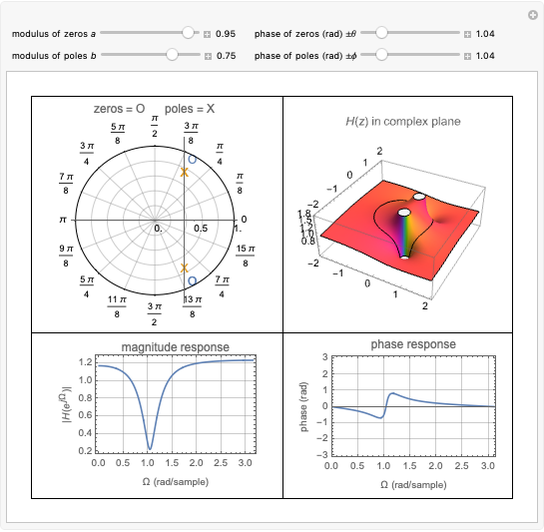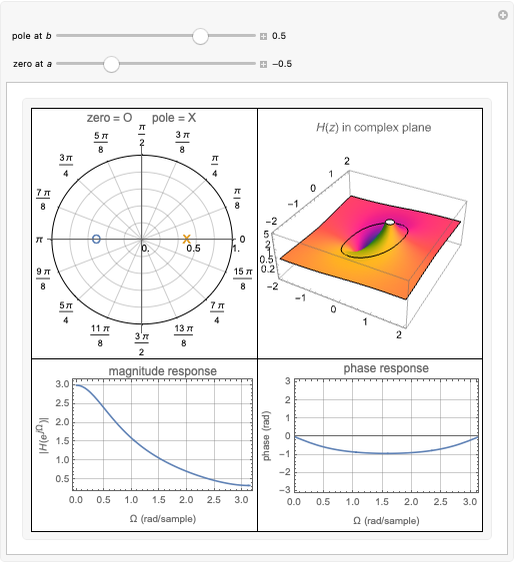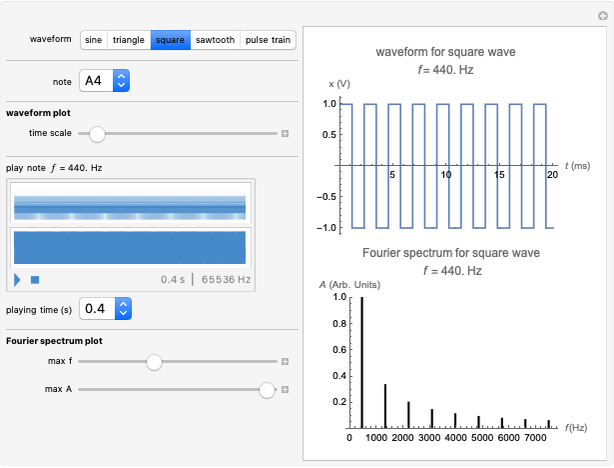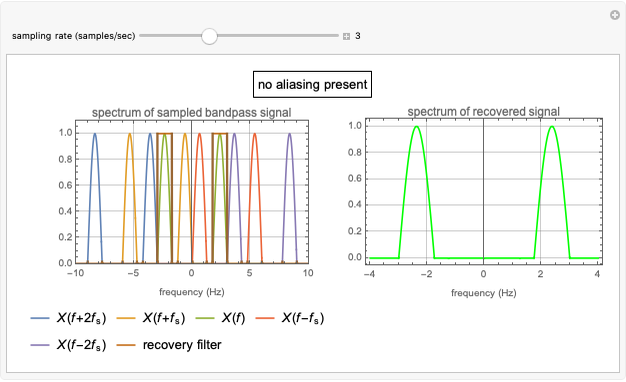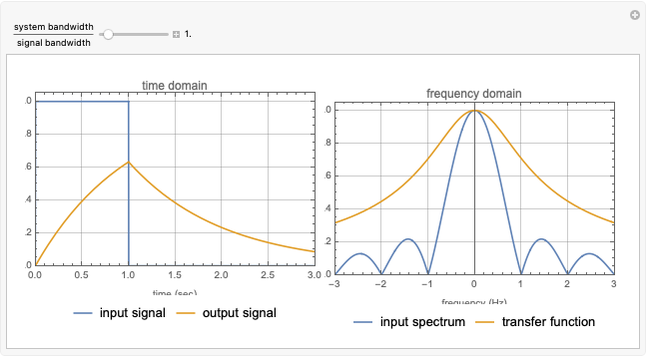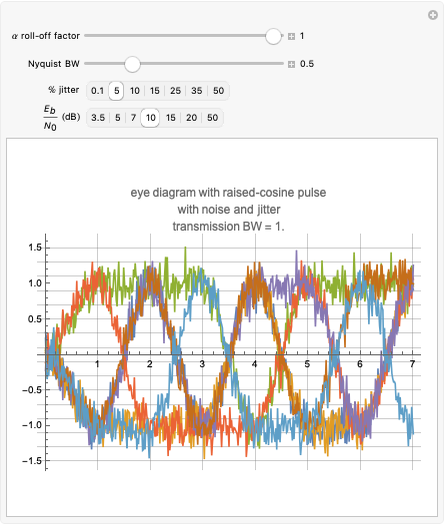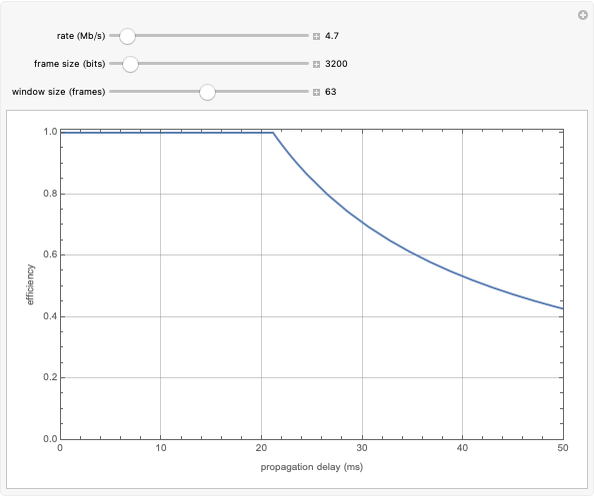Eye Diagrams for Raised-Cosine Pulses

Requires a Wolfram Notebook System
Interact on desktop, mobile and cloud with the free Wolfram Player or other Wolfram Language products.
An eye diagram (or eye pattern) is an experiential tool to graphically represent the quality of a digital signal. It provides information on the characteristics of a digital communications system, including the timing error, amount of inter-symbol interference and noise margin.
[more]
Contributed by: Victor S. Frost (University of Kansas) (August 25)
Open content licensed under CC BY-NC-SA
Details
References
[1] L. W. Couch, Digital and Analog Communications Systems, 7th ed., Upper Saddle River, NJ: Pearson/Prentice Hall, 2007.
[2] S. Haykin and M. Moher, Introduction to Analog and Digital Communications, 2nd ed., Hoboken, NJ: Wiley, 2007.
[3] V. S. Frost. "Introduction to Communication Systems: An Interactive Approach Using the Wolfram Language." University of Kansas Libraries. (Jul 5, 2023) kuscholarworks.ku.edu/bitstream/handle/1808/31779/Introduction-to-Communication-Systems-Deployed-V3.cdf?sequence=5&isAllowed=y.
Snapshots
Permanent Citation








